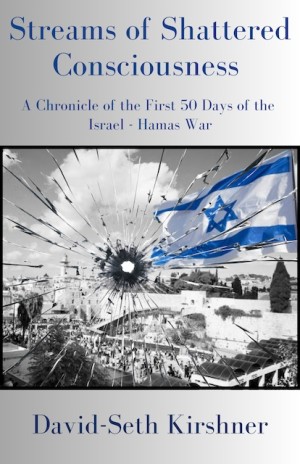How does one begin to atone in writing for being — however briefly — a Nazi? A former Hitler Youth acolyte, Heimrad Bäcker spent his entire artistic career writing and photographing physical and textual remnants of the Shoah. He was particularly obsessed with documenting the disappearing remains of the Mauthausen Camp near his hometown of Linz, Austria.
Bäcker was not alone in this obsession. Questions regarding expiation and memory have preoccupied many Austrian writers of the post – World War II era, from Thomas Bernhard, to Elfriede Jelinek, to Peter Handke and beyond.
What is the aesthetic/ethical value of such an obsession? What problems does it solve? Does it validate our own (Jewish) struggle to understand and move past the Shoah, or does it only exacerbate it? Who decides?
Bäcker highlights rather than resolves these questions in this disparate collection, which includes an interview, an academic conference paper, photographs, and written material — all of which intentionally blur the lines between found poetry, prose poetry, quotation, annotation, and transcription.
For example, a poem in the section “TRANSCRIPT Z” reads as follows:
5.
Z
Zm+
ZM
ZM-
NZ
Notes at the end of the section explain that these letters are racial notations, which mean “Gypsy,” “Mixed Race Gypsy, and “Non-Gypsy.”
Another perplexing piece is a list poem created from a conversation between Gerhard F. Rudiger and Meggy Patay-Reinhart:
i’m not able to answer that
i don’t have any answer
i did not explain that
i have to say i can’t remember
i can’t remember anymore
no
i had nothing to do with the prisoners
i have only a dim recollection
numbers this large were not, to my knowledge,
no that is not my signature …
Bäcker mentions both Hans Arp and Kurt Schwitters, members of the avant-garde DADA consortium. Like them, Bäcker seeks not to explicate, but to complicate, to make uneasy, to confuse, and to oblige the reader to ask a wide range of questions about Austria and Bäcker’s own past — a history that he discusses openly in the interview section of the book.
The rationale for this approach becomes clear in the text of the lecture that Bäcker gave in 1996 on the topography of Mauthausen, which is the most important Shoah memorial site in Austria:
When a historical object becomes part of our sense of museal classification, the process often whitewashes, smooths out, aestheticizes.… The camp’s appearance today, with its flawless external walls, a few flawlessly preserved barracks, the stone buildings, and the flawlessly restored “Death Stairs” — what a conceptual pair, flawless and Death Stairs — herein lies the irony.
If national history, and the commercial concerns working in concert with that nation, want to smooth out the past, Bäcker wants to hold onto its roughness, its messiness, and its terror. As the generations who remember this period of history firsthand pass away, Documentary Poetry warns us against resolving the past too neatly. Bäcker’s photographs resist erasure of the landscape, and his poems display the naked barbarism of Nazi language.
How do we memorialize without simplifying? This question matters for all of us as we try to make sense of such a traumatic topic. Bäcker’s compilation of pictures and words is a valuable, if challenging, addition to the archive of Holocaust literature.
Stephanie Barbé Hammer’s is a 7‑time Pushcart Prize nominee in fiction, nonfiction, and poetry. Her new novel Journey to Merveilleux City appears with Picture Show Press.





